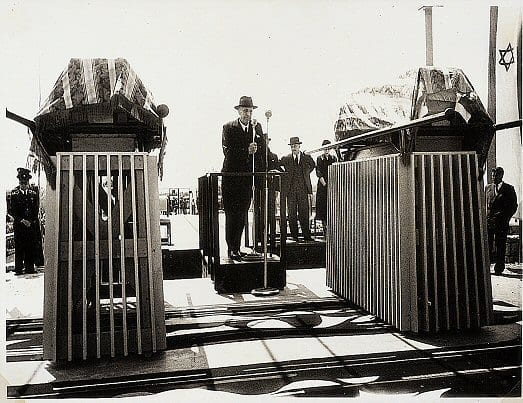
Opening of Ramat Hanadiv and Inauguration of the Gardens
On 6 April 1954, some twenty years after they died, the remains of Baron and Baroness de Rothschild were brought to Israel aboard an Israeli naval vessel. Their coffins were reinterred in a state ceremony at Ramat Hanadiv.
The choice of Ramat Hanadiv as their final resting place was based on an event during one of the Rothschilds’ visits. As the Baron was touring the stony cliffs at the southern edge of the Carmel hills, he expressed his desire to be buried ‘in the rock’, namely in the stony soil of the Carmel.
In 1936, about two years after his death, his son James de Rothschild and James’ wife Dorothy initiated the establishment of the Memorial Gardens. They designated the hill known at the time as Umm el’Alek, a beautiful spot located among the Baron’s colonies, as the site of the gardens.
